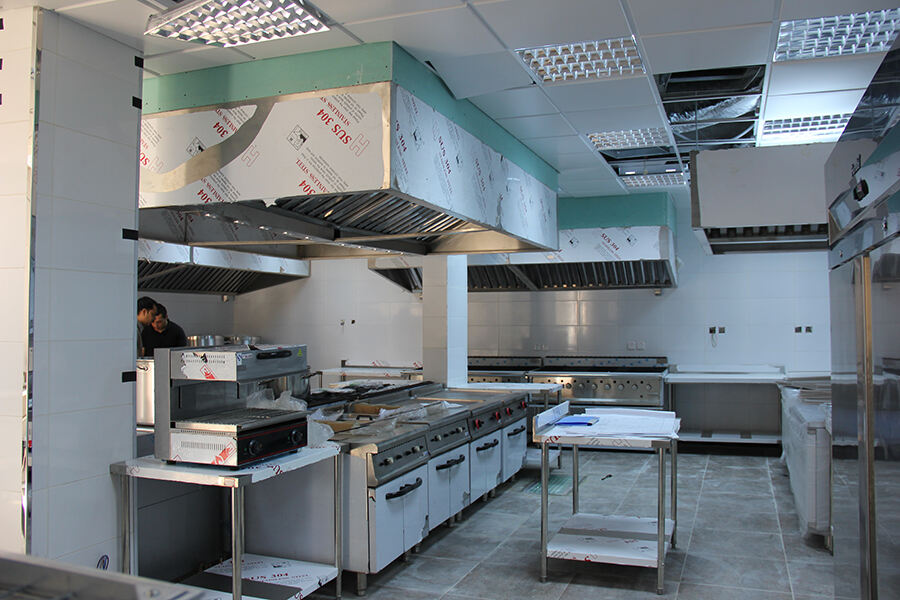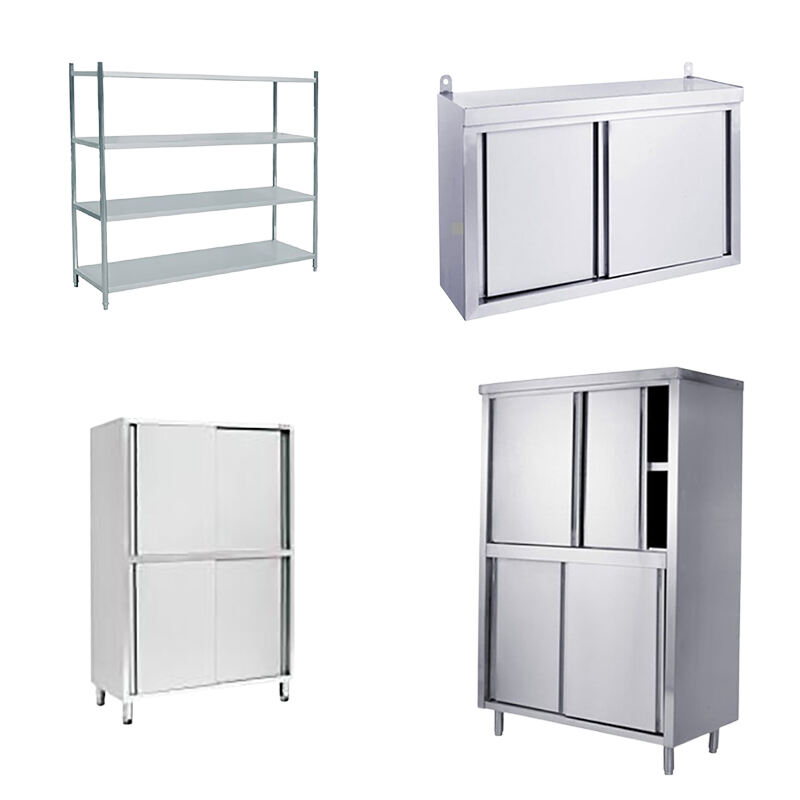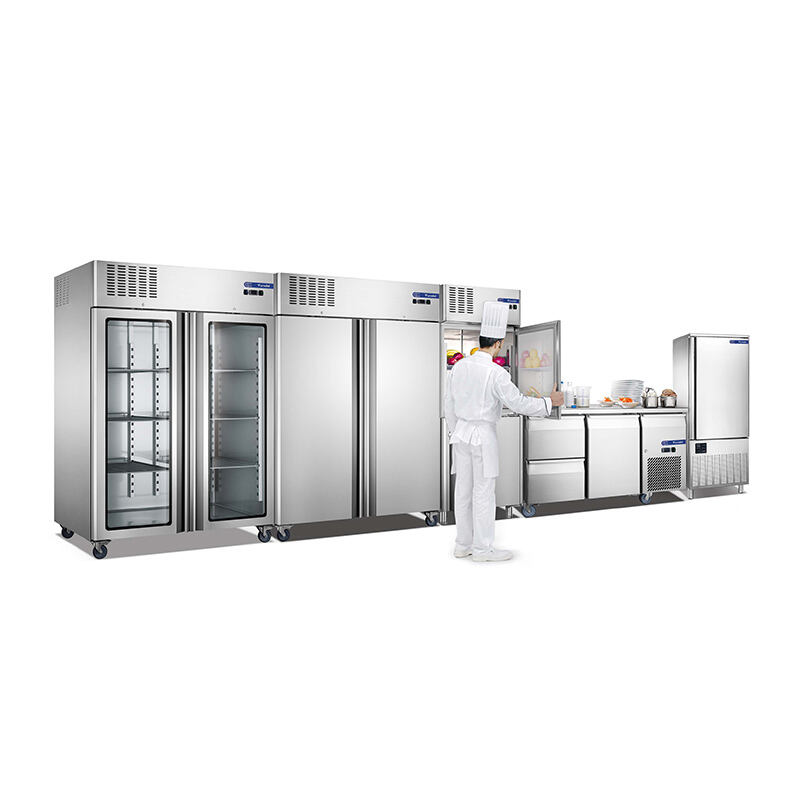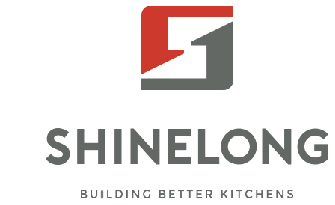News
The Importance of Proper Storage Solutions in a Commercial Kitchen
In high-pressure commercial kitchens, every square inch counts. A well-designed storage system isn’t just about tidiness; it’s the backbone of food safety, operational efficiency, and profitability. From preventing cross-contamination to ensuring ingredients remain fresh, the right commercial kitchen storage solution can mean the difference between a Michelin-starred service and a health code violation. A proper storage solution is definitely the reliable foundation of your food service business. This guide explores actionable strategies to transform your storage practices, leveraging industry insights and innovations such as stainless steel shelving and modular kitchen storage cabinets.
Why Proper Storage Solutions Matter in a Commercial Kitchen
Food Safety Compliance
Improper storage is a major cause of foodborne illnesses. Raw meats stored above ready-to-eat items can drip contaminants, while inconsistent refrigeration temperatures accelerate spoilage. For example, the FDA mandates that refrigerators maintain ≤40°F, and dry storage areas should stay below 70°F to prevent pest infestations.
Workflow Optimization
Cluttered spaces increasingly waste working time in the kitchen. A study by Food Service Warehouse found that chefs in disorganized kitchens spend 15% more time searching for ingredients. Strategic kitchen storage racks and labeled food storage containers streamline prep workflows, reducing meal assembly times by up to 20%.
Cost Control
Efficient storage not only optimizes the kitchen workflow but also reduces waste. Properly sealed dry goods containers extend shelf life by 30%, while organized pantry shelving minimizes over-purchasing. For instance, a fast-casual chain cut annual food costs by $12,000 after implementing airtight storage boxes for flour and spices.

Critical Components of High-Performance Kitchen Storage Systems
Temperature Control and Monitoring
Cold Storage: Use digital thermostats to ensure refrigerators stay at 34–38°F and freezers at -10°F to 0°F. Many commercial refrigeration units, like those from Shinelong, feature intelligent digital thermometers that allow chefs to accurately monitor temperatures. Nowadays, smart refrigerators integrate IoT sensors for real-time alerts on temperature deviations.
Dry Storage: Installing hygrometers is an essential step to manage dry storage areas in the kitchen. This allows chefs to monitor humidity levels (<15% ideal for grains) and prevent mold growth in pantry shelving units. When a restaurant needs to store beef and other types of meat, the Beef Aging Cabinet is an essential piece of commercial kitchen equipment. Its intelligent temperature control system ensures precise humidity control, maintaining the perfect balance required to keep your beef at its best.
Separation Protocols
Zoning: Designate separate areas for raw proteins, cooked foods, and produce. Color-coded stainless steel containers (red for raw meat, green for vegetables) reduce cross-contamination risks.
Vertical Storage: Store heavy items like canned goods on lower kitchen shelving to prevent accidents. Lighter food storage containers should occupy higher tiers. This not only optimizes space but also enhances kitchen safety for staff.
Mastering Dry Goods Storage
Organizing Dry Goods
Modular Bins: Stackable storage boxes with clear labels (e.g., "White Sesame – Exp. 12/2025") facilitate quick identification, enabling staff to efficiently retrieve ingredients during cooking and streamline inventory organization. Stainless steel bins, with their airtight seals, are particularly well-suited for storing bulk grains and spices.
First - In - First - Out (FIFO): Adhering to this fundamental storage principle ensures that older items are used first, maintaining the overall organization of the storage area. Implement FIFO by rotating stock with slide-out pantry shelving.
Stainless Steel Advantages: Stainless steel storage solutions offer significant benefits over plastic options. They are more resilient, resisting warping under heat and harsh cleaning chemicals. Their non-porous surfaces also prevent bacterial buildup, which is crucial for meeting FDA compliance standards.

Cold Storage Mastery
There is no doubt that the cold storage system plays a crucial role in the commercial kitchen storage solution. This means you have to set a scientific maintenance routine to safeguard the refrigeration units in your restaurant. These steps can definitely help to streamline the process!
Temperature Maintenance
Daily Logs: Document fridge/freezer temperatures twice daily. You can install some smart apps to automate this process and generate compliance reports.
Defrost Cycles: Schedule monthly defrosting for freezer coils to maintain efficiency. Shinelong’s latest models feature auto-defrost sensors, reducing energy use by 18%.
Maintenance Routines
Weekly Cleaning: Sanitize refrigerator interiors with food-safe disinfectants. Pay attention to door gaskets, where 70% of microbial growth occurs.
Condenser Coils: Vacuum dust from coils quarterly to prevent compressor overload.

Ventilation & Space Optimization
Airflow Management
Grease-Resistant Shelving: Install perforated kitchen storage racks to enhance airflow in compact spaces, reducing moisture buildup by 40%.
Exhaust Systems: Pair storage areas with commercial hoods to eliminate odors and regulate humidity, extending the lifespan of storage equipment.
Space Optimization
Vertical Racking: Use 9-foot-tall kitchen shelving to maximize underutilized vertical space.
Mobile Units: Shinelong’s rolling prep tables with undershelves add flexible workspace while storing utensils.
Basic Rules of Food Storage
-
Label Everything: Always include item names, preparation dates, and expiry times on your storage containers. This practice not only helps in maintaining an organized kitchen but also ensures that staff can quickly identify and use ingredients before they spoil. Proper labeling is crucial for First - In - First - Out (FIFO) inventory management, which helps reduce food waste and maintain food safety standards.
-
3-Inch Floor Gap: Elevate storage cabinets at least 3 inches off the floor. This gap facilitates easy cleaning and allows for thorough pest inspections. Keeping the area beneath cabinets accessible ensures that no debris or potential pest habitats are overlooked, maintaining a hygienic environment in compliance with health regulations.
- No Cardboard in Freezers: Avoid storing food in cardboard boxes in the freezer. Cardboard is porous and can absorb moisture, leading to freezer burn and compromised food quality. Transfer deliveries to airtight food storage containers immediately. These containers not only prevent freezer burn but also protect food from odors and contamination, ensuring that your ingredients remain fresh and safe for consumption.
Finding the Right Storage Space
Layout Design
Work Triangles: Position kitchen storage cabinets within arm’s reach of prep stations to minimize movement.
Corner Solutions: Install rotating vertical stainless steel shelves in corner shelving for easy access to spices and oils.
Commercial-Grade Furniture
Stainless Steel Islands: Multi-tier islands kitchen layout with integrated sinks and storage compartments serve as all-in-one prep hubs
Custom Pantries: Modular pantry shelving adapts to seasonal menu changes, accommodating bulk holiday ingredients or specialty diets.
Revolutionize Your Storage Solution with Shienlong
Shinelong is committed to offering you a comprehensive end-to-end commercial kitchen solution for hospitality and catering service establishments. Whether you need refrigeration units or storage equipment, we can provide it directly. When it comes to designing the kitchen storage layout, our engineering team adheres to ergonomic principles, offering you the right solutions to reduce staff fatigue during long shifts. Partner with our experts to audit your kitchen’s workflow and design a tailored system that aligns with health codes and boosts productivity.
Frequently Ask Questions
Why do restaurants use stainless steel countertops?
Commercial kitchens rely on 304 stainless steel countertops for their unmatched durability and food safety compliance. Unlike porous materials, stainless steel resists bacterial growth, withstands daily sanitization with industrial-grade chemicals, and handles extreme temperatures from freezing stations to plating areas. Its non-reactive surface also preserves ingredient integrity, critical when working with acidic foods like citrus or vinegar-based sauces.
Which grade of stainless steel is used for food storage?
Grade 430 stainless steel dominates commercial food storage containers due to its chromium-nickel composition, balancing corrosion resistance and cost efficiency. It is ideal for bulk ingredient bins, sauce containers, and dry storage solutions where moisture resistance is paramount.
What's optimal for dry goods storage?
Professional kitchens use stainless steel airtight containers with silicone-gasketed lids for bulk dry storage. These prevent pest infiltration and humidity damage better than plastic alternatives, particularly for high-value ingredients like saffron or specialty flours. For cost-effective solutions, NSF-certified HDPE bins with gamma seals maintain freshness for staples like rice and grains.
What are the best materials for food storage containers?
Commercial operations prioritize NSF-approved materials: Type 304 stainless steel for acidic/liquid storage, tempered glass for visible ingredient access, and HDPE plastic for lightweight dry goods. Recent innovations include antimicrobial-coated aluminum containers for spice storage, which reduce flavor cross-contamination risks in busy prep areas.
How to maximize commercial kitchen storage?
Smart kitchens combine vertical carousel shelving systems with under-counter roll-out racks, creating 40% more accessible space. Implement a zone-based layout—designate separate stainless steel shelving units for produce, proteins, and dry goods. Use ceiling-mounted racks for bulky equipment, freeing cabinet space for daily-use items. Regular audits prevent "storage creep" that plagues 68% of commercial kitchens.
What are the essential kitchen rack types?
From heavy-duty stainless steel sheet pan organizers to mobile bain-marie carts, commercial racks must serve dual purposes. Overhead utensil rails with S-hooks keep tools accessible but off counters, while NSF-certified wire cooling racks double as temporary storage during peak service. Modern kitchens now integrate antimicrobial-coated bakery racks that transition seamlessly from proofing to storage.
What are the modern storage solutions trending in 2025?
Leading operations now deploy RFID-tagged smart shelving that tracks inventory levels in real-time. Temperature-controlled drawers maintain precise climates for specialty ingredients, while collapsible silicone bins adapt to fluctuating storage needs. The real game-changer? Modular stainless steel systems that reconfigure overnight for seasonal menu changes.
 After-Sales:
After-Sales:
 EN
EN
 AR
AR
 HR
HR
 NL
NL
 FI
FI
 FR
FR
 DE
DE
 EL
EL
 HI
HI
 IT
IT
 PT
PT
 RO
RO
 RU
RU
 ES
ES
 TL
TL
 ID
ID
 SL
SL
 VI
VI
 ET
ET
 MT
MT
 TH
TH
 FA
FA
 AF
AF
 MS
MS
 IS
IS
 MK
MK
 HY
HY
 AZ
AZ
 KA
KA
 UR
UR
 BN
BN
 BS
BS
 KM
KM
 LO
LO
 LA
LA
 MN
MN
 NE
NE
 MY
MY
 UZ
UZ
 KU
KU









